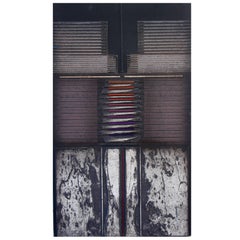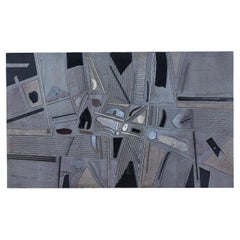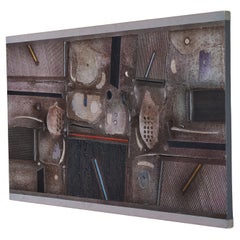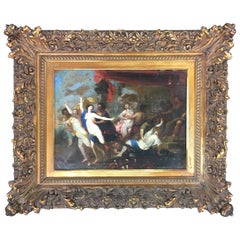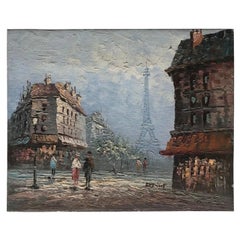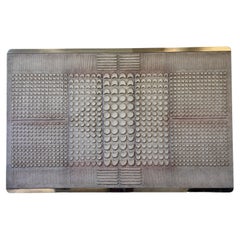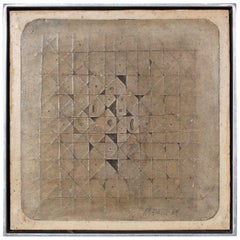Paul Maxwell Paintings
Paul Maxwell was born in Frost Prairie, Arkansas, in 1925. When Maxwell was nine, the family moved to Bastrop, Louisiana, where he completed high school. Maxwell went on to graduate from Principia College in Elsah, Illinois, in 1950 with a BA in art, followed by graduate work at Claremont College in California. Maxwell was a modern artist and sculptor who developed a technique for using stencils to create thickly textured and layered surfaces, as well as objects he patented as “stencil casting” but that later became known as “Maxwell Pochoir.” He was also known for creating the “Max Wall” in the West Atrium of the Dallas Apparel Mart; although demolished in 2006, it can be seen as a backdrop in the science-fiction movie Logan’s Run. His work is highly abstract and often consists of some kind of grid — a form that is non-hierarchical and illustrates a major theme of his work. Maxwell died in 2015.
(Biography provided by Reeves Antiques)1980s American Vintage Paul Maxwell Paintings
1980s American Modern Vintage Paul Maxwell Paintings
Paint, Canvas
1980s American Modern Vintage Paul Maxwell Paintings
Canvas, Paint
17th Century Dutch Antique Paul Maxwell Paintings
Copper
20th Century French Modern Paul Maxwell Paintings
Paint
21st Century and Contemporary Italian Modern Paul Maxwell Paintings
Iron
1940s American Other Vintage Paul Maxwell Paintings
Masonite
1960s Unknown Modern Vintage Paul Maxwell Paintings
Paper
Mid-20th Century American Modern Paul Maxwell Paintings
Paint
1980s European Vintage Paul Maxwell Paintings
Paper
Late 20th Century American Modern Paul Maxwell Paintings
Glass, Paint
20th Century Paul Maxwell Paintings
Paint
1990s French Modern Paul Maxwell Paintings
Paint
1990s French Modern Paul Maxwell Paintings
Paint
1980s American Modern Vintage Paul Maxwell Paintings
Steel
1990s American Modern Paul Maxwell Paintings
Aluminum
1960s American Mid-Century Modern Vintage Paul Maxwell Paintings
Aluminum
20th Century American Mid-Century Modern Paul Maxwell Paintings
Canvas, Acrylic
Mid-20th Century American Mid-Century Modern Paul Maxwell Paintings
Canvas
1980s American Brutalist Vintage Paul Maxwell Paintings
Canvas, Acrylic, Wood
1950s American Mid-Century Modern Vintage Paul Maxwell Paintings
Canvas
1960s American Vintage Paul Maxwell Paintings
1970s American Organic Modern Vintage Paul Maxwell Paintings
Acrylic, Gesso, Paper
1970s American Vintage Paul Maxwell Paintings
Wood, Acrylic, Board
